Tips for Curbing Sugar Cravings: From Resetting Appetite to Blood Sugar Control
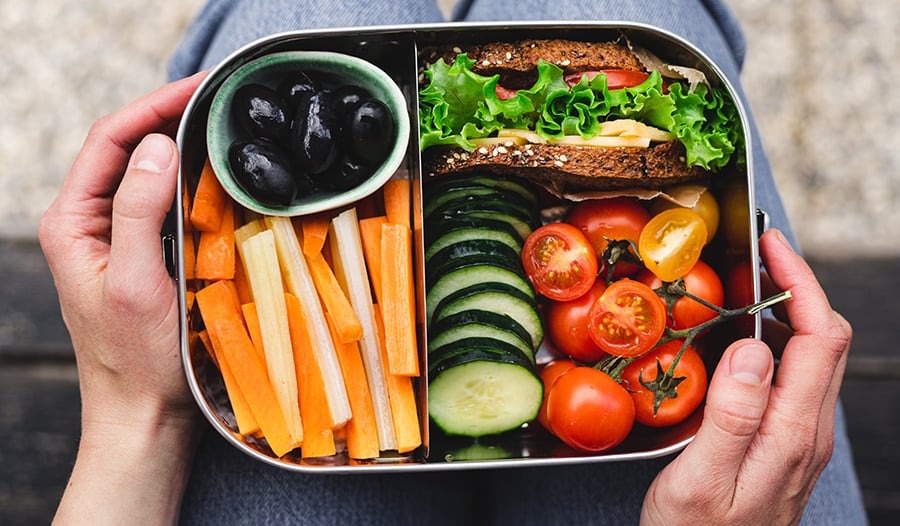
Originally posted April 2017 / Updated July 2023
Despite what you may have heard, overcoming food cravings has little to do with willpower.
Oxygen, food, and water are the three main things we need to stay alive. If we're deprived of any of them for a significant period (not very long, when it comes to oxygen), the body and brain have powerful mechanisms that move us to breathe, eat, or drink.
In the case of food, the brain is susceptible to sudden drops in blood sugar and releases a number of chemicals that drive us to crave sugars and sweets to raise blood sugar levels. Our intestinal tract and fat cells can also secrete hormones to urge us to eat.
Appetite in Overdrive?
People without weight concerns may have a fully functioning system of appetite control. This system comprises blood glucose, hormones, gut-derived small proteins (peptides), neurotransmitters (brain chemicals), and other compounds.
These compounds act on the appetite center in the brain to activate or block the feelings of hunger and satiety (the feeling of being full or satiated). People of average weight don't usually experience frequent cravings and may be more attuned to feelings of hunger. They are also inclined to feel satisfied eating portions that don't promote weight gain.
One key factor that disrupts appetite and portion control is abdominal fat accumulation. When abdominal fat cells are enlarged in overweight and obese individuals, it can disturb the complex system of appetite control becomes altered. The critical factor that leads to this disruption is insulin resistance.
Resetting Appetite Control
Resistance to the hormone insulin sets the stage for intense food cravings. In more primitive times, insulin resistance filled the purpose of helping humans pack on the pounds when food was abundant so that they could survive during famine. We may not have that problem today, so our physiology can be stuck in the fat-storing mode with an overactive appetite.
If you want to lose weight and keep it off, it is important to reset your appetite control system and free yourself from excessive food cravings. Two powerful dietary approaches to this are stabilizing blood sugar and boosting serotonin levels in your brain.
Stabilizing Blood Sugar
The first step to eliminating food cravings is to treat the cause—in many cases, the issue is unstable blood sugar control due to insulin resistance. Using breakthrough technology involving 24-hour blood sugar monitoring, Michael Lyon, MD, and I discovered that maintaining blood sugar levels within a narrow range is the key to controlling an overactive appetite.
When people are on the "blood sugar roller coaster," controlling their appetite or portion sizes is challenging. Even if their blood levels may be high or normal, the brain goes into panic mode every time they experience a quick drop in blood sugar levels. It secretes potent appetite stimulators and hormones such as cortisol and adrenaline to boost blood sugar levels. It is a robust survival mechanism.
Much of the effect of blood sugar fluctuations on appetite control can be traced to specialized glial cells surrounding every brain cell. Glial cells are important in sensing the level of glucose in the blood. When blood sugar drops rapidly, glial cells send powerful signals to brain regions, such as the hypothalamus, which stimulate food cravings. Because of insulin resistance and the accompanying blood sugar rollercoaster, overweight people often experience near-constant eating commands.
So, how do you improve blood sugar control and insulin resistance? Here are seven keys:
1. Eat a low-glycemic-load diet
This means avoiding overconsuming carbohydrates, especially those that quickly raise blood sugar, such as foods containing refined sugar, high-fructose corn syrup, white flour, and other sugary foods.
2. Try the super fiber PGX®
It has the most scientific support, including results from clinical trials in humans. Take 2.5–5 grams before meals.
3. Supplement with chromium
Chromium is necessary for insulin to work properly at a dosage of 200–400 mcg per day. Chromium supplementation has been shown to help with appetite control.
4, Get a handle on stress
The stress hormone cortisol promotes poor blood sugar control and promotes stress-induced food cravings.
5. Load up on fruit, veggies, and protein
Ensure you never really get hungry by consuming snacks between meals, such as low-calorie options like fresh vegetables and fruit or satiety-promoting foods like nuts and seeds and whey protein.
6. Exercise daily
Engage in physical exercise for at least 30 minutes every day.
7. Plan ahead
Plan your daily menu in advance.
A Closer Look at PGX®
PolyGlycopleX, or PGX® for short, is a unique dietary fiber matrix produced with konjac root fiber (glucomannan), xanthum gum, and alginate. Over the last 20 years, detailed human clinical studies published in major medical journals have shown PGX® to exert the following benefits:
- Reduces appetite and promotes satiety.
- Reduce the glycemic index of any food, beverage, or meal by as much as 70%.
- Increase insulin sensitivity and promote improved blood sugar control.
- It helps to stabilize blood sugar levels which helps reduce food cravings.
- Promotes safe and effective weight control.
Some of these benefits are due to PGX® naturally raising GLP-1 levels.12 GLP-1 is a hormone secreted in the small intestine and colon known as L-cells. The way that it is supposed to work is that in response to food components, L-cells will release GLP-1. This leads to improved insulin sensitivity, improved blood sugar control, and the promotion of satiety.
As PGX® travels through the small intestine and colon, it does two things to increase GLP-1: (1) it stimulates the release of GLP-1 in a pulse-like fashion from the L-cells, and (2) it increases the number of GLP-1-producing L-cells in the small intestine and colon. The repeated pulses of GLP-1 release produce satiety.
PGX is available in a variety of different forms, such as granules, capsules, and as an ingredient in powdered drink mixes for satiety or meal replacement. I prefer the granules and the meal replacement formulas. The key is to take 5 grams of PGX before meals three times per day.
Boosting Serotonin Levels With 5-HTP or Saffron Extract
Another nutritional strategy to help with food cravings is to boost serotonin levels in the brain. Low levels of serotonin can lead to food cravings, particularly for sweets. The manufacture of serotonin begins with the amino acid tryptophan. Insulin resistance or excess cortisol blocks the conversion of tryptophan to 5-Hydroxytryptophan (5-HTP)—the intermediate step between tryptophan and serotonin.
Four human clinical trials have shown 5-HTP works very well in promoting satiety. These studies with 5-HTP were conducted in Italy. And even though the women were not making a conscious effort to eat fewer calories or lose weight, with 5-HTP supplementation, that is precisely what they experienced. Specifically, the results from the studies showed that with 5-HTP supplementation, the women consumed fewer calories from pasta and bread. With the reduced calorie intake, the average weight loss was between 1 and 1.5 pounds per week during the four to six weeks of the studies. The usual dosage for 5-HTP is 50–100 mg three times daily before meals.
References:
- Young HA, Watkins H. Eating disinhibition and vagal tone moderate the postprandial response to glycemic load: an randomized controlled trial. Sci Rep. 2016 Oct 20;6:35740.
- Kacinik V, Lyon M, Purnama M, et al. Effect of PGX, a novel functional fiber supplement, on subjective ratings of appetite in overweight and obese women consuming a 3-day structured, low-calorie diet. Nutr Diabetes. 2011 Dec 12;1(12):e22.
- Yong MK, Solah VA, Johnson SK, Meng X, Kerr DA, James AP, Fenton HK, Gahler RJ, Wood S. Effects of a viscous-fibre supplemented evening meal and the following un-supplemented breakfast on post-prandial satiety responses in healthy women. Physiol Behav. 2016 Feb 1;154:34-9.
- Solah VA, Brand-Miller JC, Atkinson FS, et al. Dose-response effect of a novel functional fiber, PolyGlycopleX(®), PGX(®), on satiety. Appetite. 2014 Jun;77:72-6.
- Solah VA, O'Mara-Wallace B, Meng X, et al. Consumption of the Soluble Dietary Fibre Complex PolyGlycopleX(®) Reduces Glycaemia and Increases Satiety of a Standard Meal Postprandially. Nutrients. 2016 May 6;8(5):268.
- Solah VA, Kerr DA, Hunt WJ, et al. Effect of Fibre Supplementation on Body Weight and Composition, Frequency of Eating and Dietary Choice in Overweight Individuals. Nutrients. 2017 Feb 16;9(2):149.
- Brand-Miller JC, Atkinson FS, Gahler RJ, et al. Effects of PGX, a novel functional fiber, on acute and delayed postprandial glycemia. Eur J Clin Nutr 2010 Dec;64(12):1488-93.
- Jenkins AL, Kacinik V, Lyon MR, Wolever TMS. Reduction of postprandial glycemia by the novel viscous polysaccharide PGX in a dose-dependent manner, independent of food form. J Am Coll Nutr 2010;29(2):92-98.
- Lyon MR, Reichert RG. The effect of a novel viscous polysaccharide along with lifestyle changes on short-term weight loss and associated risk factors in overweight and obese adults: an observational retrospective clinical program analysis. Altern Med Rev. 2010 Apr;15(1):68-75.
- Reimer RA, Wharton S, Green TJ, et al. Effect of a functional fiber supplement on glycemic control when added to a year-long medically supervised weight management program in adults with type 2 diabetes. Eur J Nutr. 2021 Apr;60(3):1237-1251.
- Pal S, Ho S, Gahler RJ, Wood S. Effect on Insulin, Glucose and Lipids in Overweight/Obese Australian Adults of 12 Months Consumption of Two Different Fibre Supplements in a Randomised Trial. Nutrients. 2017 Jan 29;9(2):91.
- Grover GJ, Koetzner L, Wicks J, et al. Effects of the soluble fiber complex PolyGlycopleX® (PGX®) on glycemic control, insulin secretion, and GLP-1 levels in Zucker diabetic rats. Life Sci. 2011 Feb 28;88(9-10):392-9.
- Brownley KA, Von Holle A, Hamer RM, et al. A double-blind, randomized pilot trial of chromium picolinate for binge eating disorder: results of the Binge Eating and Chromium (BEACh) study. J Psychosom Res. 2013 Jul;75(1):36-42.
- Docherty JP, Sack DA, Roffman M, et al. A double-blind, placebo-controlled, exploratory trial of chromium picolinate in atypical depression: effect on carbohydrate craving. J Psychiatr Pract. 2005 Sep;11(5):302-14.
- Lim JJ, Sequeira IR, Yip WCY, Lu LW, Barnett D, Cameron-Smith D, Poppitt SD. Postprandial glycine as a biomarker of satiety: A dose-rising randomized control trial of whey protein in overweight women. Appetite. 2022 Feb 1;169:105871
- Rigamonti AE, Leoncini R, De Col A, et al. The Appetite-Suppressant and GLP-1-Stimulating Effects of Whey Proteins in Obese Subjects are Associated with Increased Circulating Levels of Specific Amino Acids. Nutrients. 2020 Mar 15;12(3):775.
- Ventura T, Santander J, Torres R, Contreras AM. Neurobiological basis of craving for carbohydrates. Nutrition. 2014 Mar;30(3):252-6.
- Ceci F, Cangiano C, Cairella M, et al. The effects of oral 5-hydroxytryptophan administration on feeding behavior in obese adult female subjects. J Neural Transm (1989) 76 109–117.
- Cangiano C, Ceci F, Cairella M, et al. Effects of 5-hydroxytryptophan on eating behavior and adherence to dietary prescriptions in obese adult subjects. Adv Exp Med Biol (1991) 294 591–593.
- Cangiano C, Ceci F, Cascino A, et al. Eating behavior and adherence to dietary prescriptions in obese adult subjects treated with 5-hydroxytryptophan. Am J Clin Nutr (1992) 56 863–867.
- Cangiano C, Laviano A, Del Ben M, et al. Effects of oral 5-hydroxy-tryptophan on energy intake and macronutrient selection in non-insulin dependent diabetic patients. Int J Obes Relat Metab Disord (1998) 22 648–654.
DISCLAIMER:This Wellness Hub does not intend to provide diagnosis...













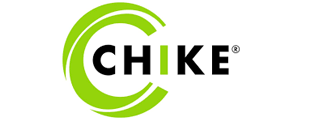




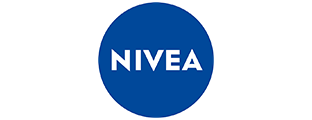










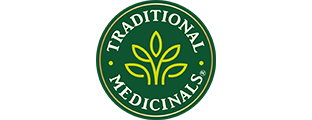







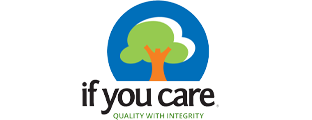





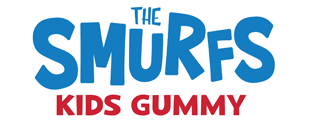
































 Table of Contents
Table of Contents


